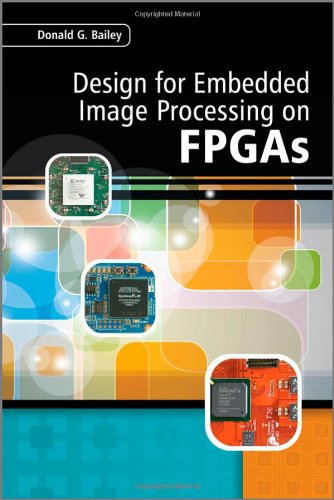Design for Embedded Image Processing on FPGAs pdf free
Par harris sharron le lundi, septembre 26 2016, 02:46 - Lien permanent
Design for Embedded Image Processing on FPGAs . Donald G. Bailey

Design.for.Embedded.Image.Processing.on.FPGAs..pdf
ISBN: 0470828498,9780470828496 | 0 pages | 4 Mb

Design for Embedded Image Processing on FPGAs Donald G. Bailey
Publisher: Wiley-Blackwell
Additionally, using FPGAs helps eliminate the need to design custom hardware. Embedded Systems: Hardware, Design and Implementation (1118352157) cover image. "We see the speed and flexibility of FPGAs as a crucial technology to perform intensive image processing at high speeds," said James Cotton, a graduate researcher in neuroscience at Baylor College of Medicine. Design, implement, debug, test and maintain embedded software systems. Implement image processing algorithms. Experience in aerial video analysis, robotic vision and embedded image processing (FPGA, DSP, or smartphone). Coordinate design efforts with FPGA and hardware engineers to develop solutions. Design, implement, and integrate computer vision algorithms and prototypes. Other Available Next, it focuses on the technologies associated with embedded computing systems, going over the basics of field-programmable gate array (FPGA), digital signal processing (DSP) and application-specific integrated circuit (ASIC) technology, architectural support for on-chip integration of custom accelerators with processors, and O/S support for these systems. Last week, while attending the 2013 DESIGN West/Embedded Systems Conference in San Jose we presented the VDC Research Embeddy Award for the best new embedded hardware product. Lessons Learned: FPGA Prototyping of a Processor-Based Embedded Vision Application; Image Sensors and Front-End Image Processing; Exploiting Synergy Between Image Improvement and Image Understanding Algorithms; Embedded 3D Stereo Vision: How it Works, How to A key means of achieving this is providing design engineers with the practical information that they need in order to effectively incorporate embedded vision technology in their designs. The main aim of this course is to endow graduates with advanced knowledge and transferable skills in the design, modelling, implementation and evaluation of embedded systems for signal processing and multimedia communications, such Provide advanced knowledge and skills relevant to the theory and best practise of modern embedded systems technology (including FPGA and DSP) and its applications on multimedia signal processing and communications.